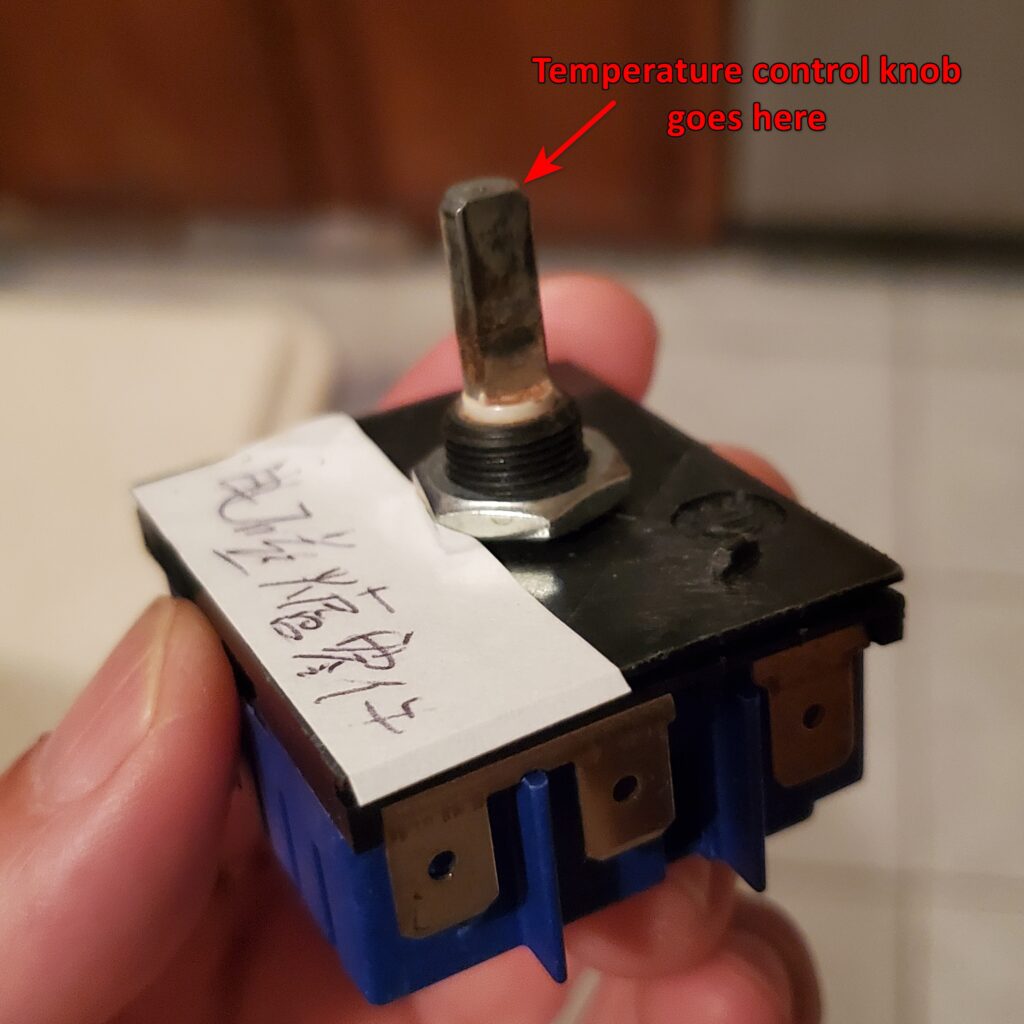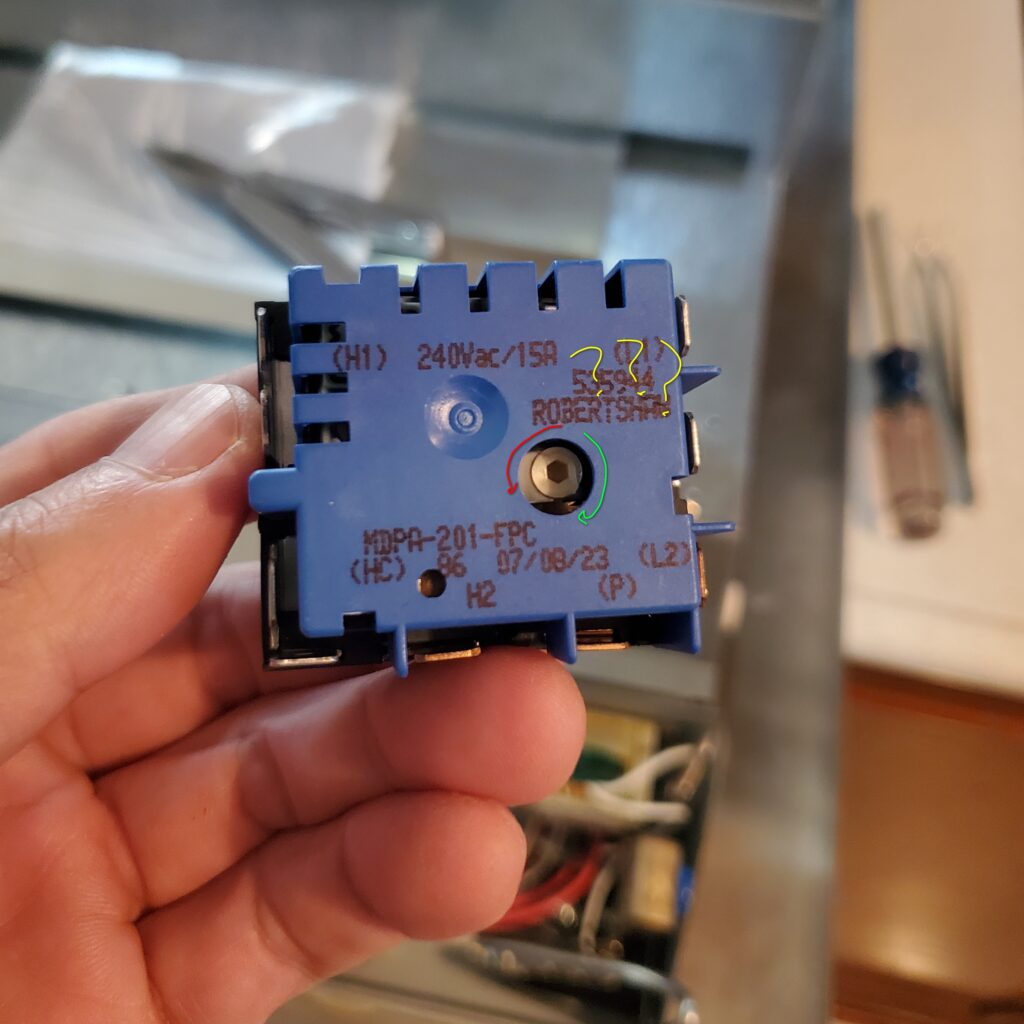Sometimes, it’s the absence of something that is remarkable – love during childhood, for example, or pain during surgery, or rancor during a break-up. I recently came upon the absence of something notable: an objective, extant fact that I could not find on the internet.
I generally am not a confident person, but one of the few things I think I’m good at is finding information. Before Google existed, my friend Mo and I were Science Olympiad Altavista champs, and I like to think that my research skills have only improved since then. Here’s the story of something that stumped me.
One of the many home maintenance projects I’ve undertaken recently was to repair an electric stovetop, the main burner of which would only work at “high” no matter where I set it. In more ways than one, it was impossible for me to simmer down. Google helped me here – I learned that I needed to replace the energy regulator, also known as an infinite switch, a device that translates the knob’s position to the burner temperature.

Replacing the energy regulator solved the problem, but created a new one. The maximum temperature was so low that if I started heating a pot of water when I was hungry, I had entered ketosis by the time it boiled.
I noticed that there was an inset hex screw on the back of the regulator, and I reckoned that it might control the max temp, but I didn’t know which way to turn it. Sure, I could have compared the heating curves before and after turning it in both directions, but I thought I could save some time by googling for an answer.

Wrong! For the first time in recent memory, perhaps in decades, I was unable to find an objective fact on the internet. I googled, I looked at the part seller’s site, the manufacturer’s site, and a number of home repair forums. I emailed the part seller, who responded that it could not help with repairs and gave me the option of returning the part. I emailed the manufacturer, and after a few days with no response, I called. The customer service rep, who surprised me with a plausible Kiwi accent (I have a Fisher and Paykel stove), tried her best but found nothing and suggested that I test it both ways.
Then, I tried something new – an AI search tool called Perplexity – and it gave me two clues! The first clue was a product page on Amazon showing a similar part for a different stove that also had a white inset screw. This confirmed my intuition that the inset screw was a common design, not unique to my stove model, and I thought the answer would be imminent. I emailed the Amazon seller and was rewarded with a turd:
While different heat levels can be selected by using the knob, the part itself cannot be fine-tuned or adjusted beyond the predefined settings of the switch. The temperature range and increments are predetermined by the design and specifications of the switch.
The second Perplexity clue was impressive in both its clarity and its apparent deductive reasoning:
To increase the maximum temperature of the burner, you should turn the inset screw on the infinite switch in a specific direction. However, the search results did not provide a clear answer to this question. Based on general knowledge, typically turning the screw clockwise increases the maximum temperature, while turning it counterclockwise decreases it. It’s important to make small adjustments and test the burner to ensure the desired temperature range is achieved.
Just as I was preparing to bite the bullet and go through the process of testing both directions, I finally received an e-mail from Fisher and Paykel:
Apologies for the delay in responding. I had sent your enquiry to our technical department and they have advised Turn white cog to reverse temp
Could you please be more vague, I was tempted to respond, but I mustered the maturity to ask which direction would increase the temperature, and, a couple days later, they replied:
turn it clockwise
I followed the instruction, tested the burner, and confirmed that Perplexity’s inference was correct.
Am I alone in finding this experience remarkable? Is it common to discover the absence of an objective, extant fact like this? The situation would be more credible if the white inset screw was unique to Fisher and Paykel, but I learned that it’s a common design for energy regulators. Why is this information so inaccessible? Is there an industry-wide information embargo? Perhaps there are liability issues concerning unsafe max temps? Something more nefarious?
I’d love to hear about similar situations you may have encountered. Is the absence of information more common than I’ve experienced? Could valuable information be disappearing before our eyes?
